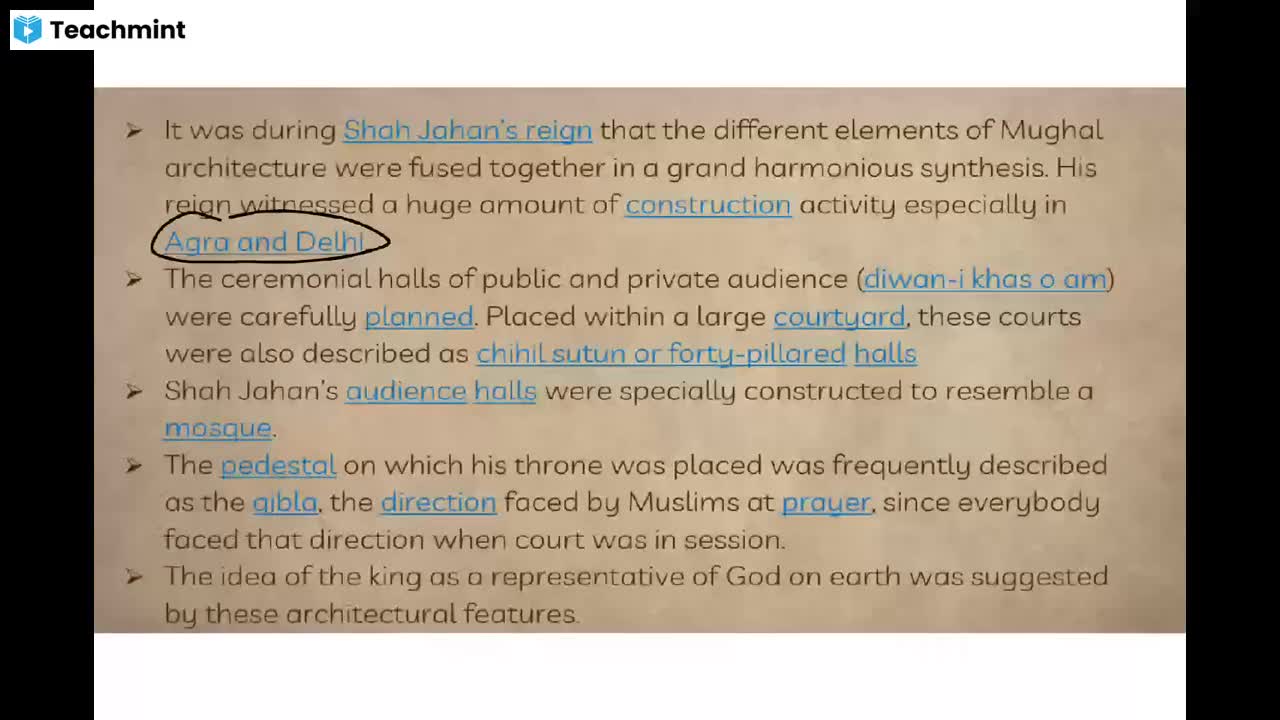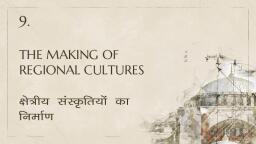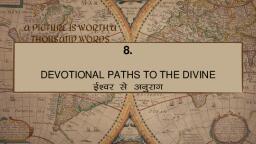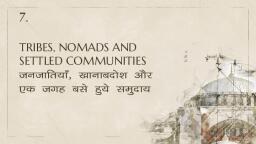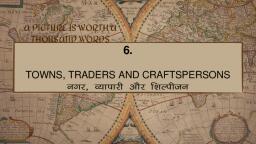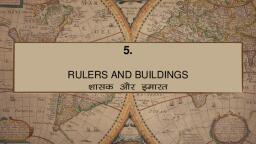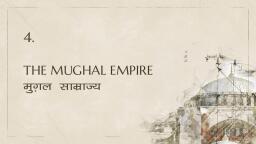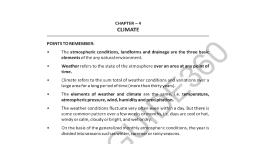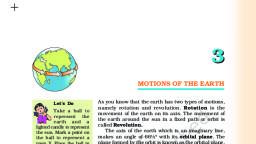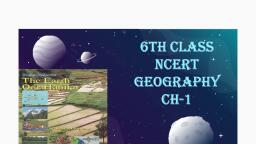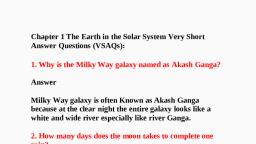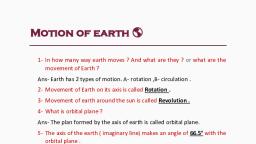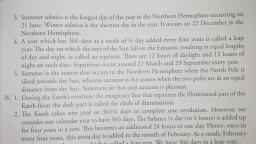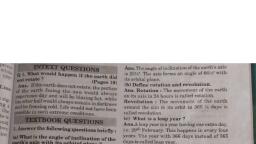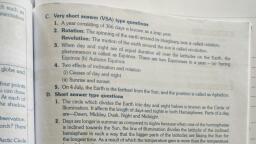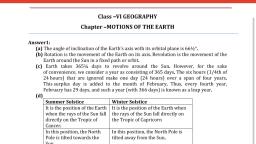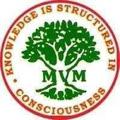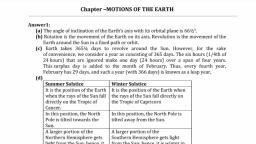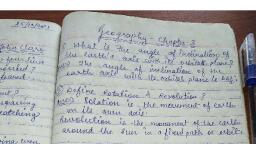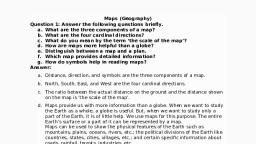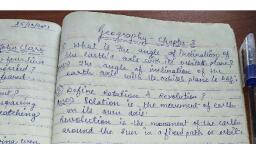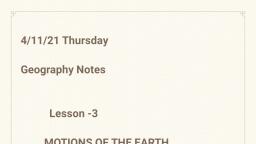Page 1 :
6TH CLASS GEOGRAPHY, NCERT CH-3
Page 2 :
MOTIONS OF THE EARTH, ●, ●, ●, ●, ●, ●, , Rotation, Revolution, Orbital plane, Circle of illumination, Leap year, Seasons
Page 3 :
The earth has two types of motions –, Rotation (घूणन), The movement of the earth on its axis., , Revolution (प र मण), , The movement of the earth around the, sun in a fixed path or orbit is called, Revolution.
Page 4 :
Orbital plane (क ीय, तल), The axis of the earth, which is an imaginary, line, makes an angle of, 66½° with its orbital, plane. The plane formed, by the orbit is known as, the orbital plane.
Page 5 :
Circle of illumination ( दी, , वृ ), , The earth receives light from the sun. Due to the, spherical shape of the earth, only half of it gets, light from the sun at a time . The portion facing, the sun experiences day while the other half, away from the sun experiences night. The circle, that divides the day from night on the globe is, called the circle of illumination. The earth takes, about 24 hours to complete one rotation around, its axis. The period of rotation is known as the, earthday.
Page 6 :
Leap year (लीप वष), Earth takes 365¼ days (one year) to, revolve around the sun. We consider a year, as consisting of 365 days only and ignore, six hours for the sake of convenience Six, hours saved every year are added to make, one day (24 hours) over a span of four, years. This surplus day is added to the, month of February. Thus every fourth year,, February is of 29 days instead of 28, days.Such a year with 366 days is called a, leap year. The earth is going around the, sun in an elliptical orbit.
Page 7 :
Seasons (मौसम), A year is usually divided into summer, winter, spring and autumn, seasons. Seasons change due to the change in the position of the, earth around the sun., , Summer Solstice ( ी, , आयनात), , On 21st June, the Northern Hemisphere is, tilted towards the sun. The rays of the sun, fall directly on the Tropic of Cancer. As a, result, these areas receive more heat. The, longest day and the shortest night at these, places occur on 21st June. At this time in the, Southern Hemisphere all these conditions, are reversed. It is winter season there. The, nights are longer than the days.This position, of the earth is called the Summer Solstice.
Page 9 :
Winter Solstice (शीत आयनात), On 22nd December, the Tropic of, Capricorn receives direct rays of the sun, as the South Pole tilts towards it. As the, sun’s rays fall vertically at the Tropic of, Capricorn (23½° S), a larger portion of the, Southern, Hemisphere, gets, light., Therefore, it is summer in the Southern, Hemisphere with longer days and shorter, nights. The reverse happens in the, Northern Hemisphere. This position of the, earth is called the Winter Solstice.
Page 10 :
Equinox (िवषुव), On, 21st, March, and, September 23rd, direct rays, of the sun fall on the, equator. At this position,, neither of the poles is tilted, towards the sun; so, the, whole earth experiences, equal days and equal nights., This is called an equinox.
Page 11 :
Autumn season and Spring season, (शरद ऋतु और बसं त ऋतु ), On 23rd September, it is autumn season, in the Northern Hemisphere and spring, season in the Southern Hemisphere. The, opposite is the case on 21st March, when, it is spring in the Northern Hemisphere, and autumn in the Southern Hemisphere.
Page 12 :
THANKS



